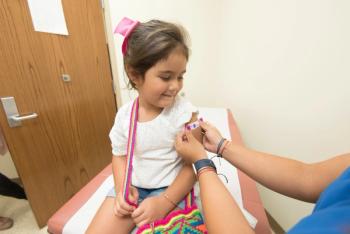
Language Barriers Hindering COVID-19 Vaccination in Hispanic People
Low COVID-19 vaccination rates among Hispanic populations may be due to limited vaccine information available in Spanish.
Inoculation with a complete
To better understand this disparity, one study, published in the
Using Census data, the University of Chicago researchers determined the 10 most populous cities in the US and the percentage of the populations that identify as Hispanic/Latino. They also extracted data from the COVID-19 Vaccination Map compiled by the US Centers for Disease Control and Prevention (CDC). Finally, the investigators obtained the percentage of Hispanic people with limited English proficiency (LEP) from the 2019 American Community Survey.
For each city, the investigators measured the ease of accessing vaccine information in English and in Spanish via an online Google search. They counted the number of clicks required to obtain COVID-19 vaccine registration information in Spanish. The investigators identified major vaccine-distributing retailers to determine whether appointment scheduling was available in Spanish. They used STATA and a signed-rank Wilcoxon test to compare English and Spanish accessibility.
The average number of clicks required to access COVID-19 information and appointments on the cities’ websites was comparable for English and Spanish languages, though Spanish resources required 1-1.5 more clicks. Of the 8 “big-box” vaccine retailers pulled from the vaccine locator maps, 5 did not have COVID-19 information available in Spanish and 4 had neither information nor scheduling available in Spanish.
Of the 10 most populated cities, the vaccination rates among Hispanic populations ranged from 29-49%, in comparison to 64% for the overall US population. The investigators noted that while vaccination rates among Hispanic people have been improving, this population faces preexisting barriers to technology access. The investigators emphasized links to COVID-19 vaccine registration should be listed on the main pages of all vaccine distributors websites.
“What would you do if you were Spanish speaking and wanted access to a vaccine?” said study co-author Diana Nunez, a second-year student at the University of Chicago Pritzker School of Medicine. “We found that it’s not straightforward—there are multiple pages, multiple links you have to go through, where there are inconsistencies in language access. When we think about these public health issues of access, information distribution, and resources—we rely on these big retailers, but many of them don’t even have information available in Spanish. How can we change these things so they don’t perpetuate the health disparities that we see in our communities?”
Newsletter
Stay ahead of emerging infectious disease threats with expert insights and breaking research. Subscribe now to get updates delivered straight to your inbox.
































































































































































































































































































































